Few spaces capture post-war optimism quite like a 1950s living room. Pastel paint met streamlined furniture, and atomic motifs hinted at a future filled with rockets and road trips. Re-creating that vibe today isn’t about building a museum; it’s about borrowing shapes, colors, and textures that still feel joyful and useful. Whether you’re committing to full mid-century modern or sprinkling nostalgic accents through a contemporary space, the following ideas will help you blend vintage spirit with modern comfort while staying unmistakably in 1950s living room territory.
1. Pastel Walls Set the 1950s Living Room Mood
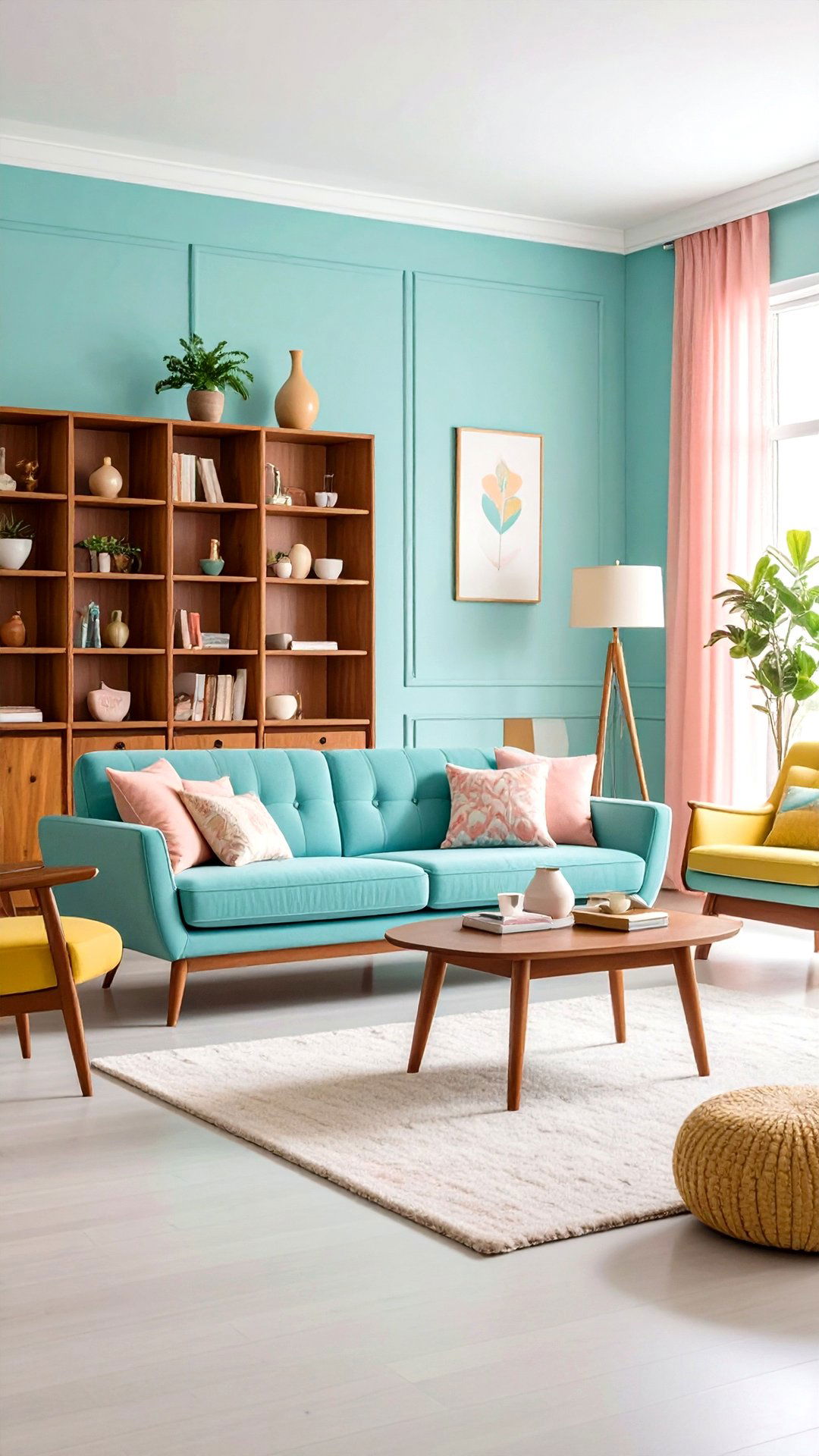
A soft wash of pink, mint, or turquoise immediately telegraphs mid-century charm. In a 1950s living room, pastels worked as neutral backdrops for bright accessories, so choose one main hue and repeat it in small accents for cohesion. Finish the look with white trim and a crisp ceiling to keep things light. Pastel walls also flatter natural wood tones common to the era, making teak side tables or a walnut bookcase pop without feeling heavy.
2. Hang a Starburst Clock as Your Atomic Focal Point
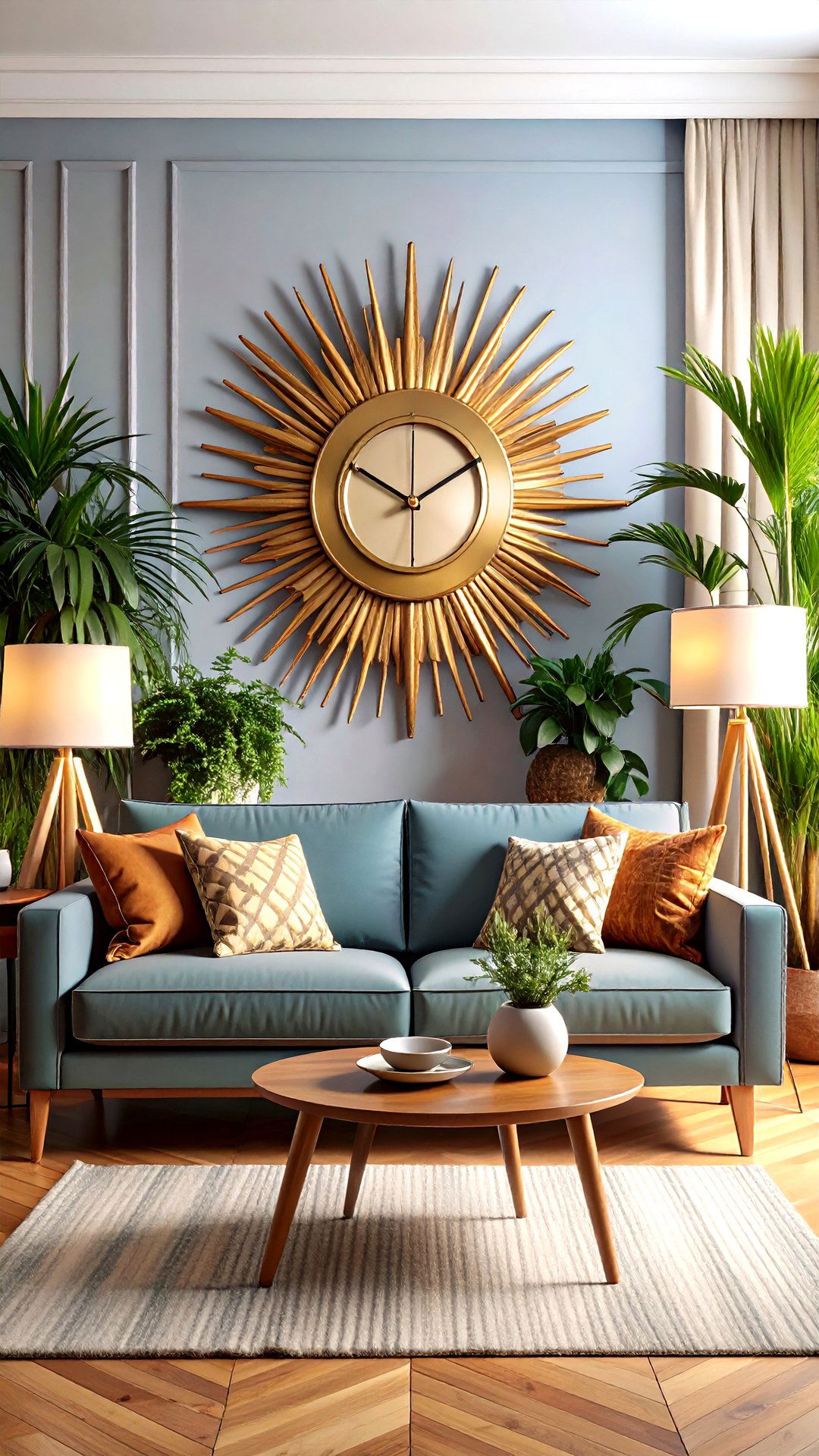
The quickest way to announce “Welcome to the atomic age” is a gleaming starburst clock. With spiky rays of brass, walnut, or bright enamel, this accessory delivers sculptural drama and punctuality in one stroke. Mount it above the sofa or fireplace so its rays frame the seating group, then echo the form with spiky plant leaves or tapered lamp bases to create rhythm across the room.
3. Choose a Low-Slung, Taper-Leg Sofa for Authentic Silhouette

A 1950s living room revolved around conversation, so seating featured long, low lines and neatly angled legs that seemed to float above the floor. Hunt for a restored Danish or American three-seater in wool, velvet, or durable tweed; if space is tight, a compact cocktail sofa works just as well. Keep upholstery solid or softly textured so patterned pillows and rugs can shine.
4. Anchor the Space with a Boomerang Coffee Table

Nothing says space-race chic like the swooping curve of a boomerang or kidney-shaped coffee table. Its asymmetry makes traffic flow easier and invites playful accessory vignettes — think stacked design books, a ceramic ashtray repurposed as a catch-all, and a glossy tray in a contrasting color. For extra authenticity, pick a table with hairpin legs or tapered dowels.
5. Add a Sputnik Chandelier for Show-Stopping Glow

Mid-century designers believed light could be sculpture, and the starburst-in-3D form of a sputnik chandelier proves it. Suspend one over the main seating cluster so brass arms reach outward like frozen fireworks. Pair with dimmer switches to let the fixture double as ambient mood lighting or bright task light during gatherings.
6. Dress Windows in Barkcloth Drapes with Atomic Prints
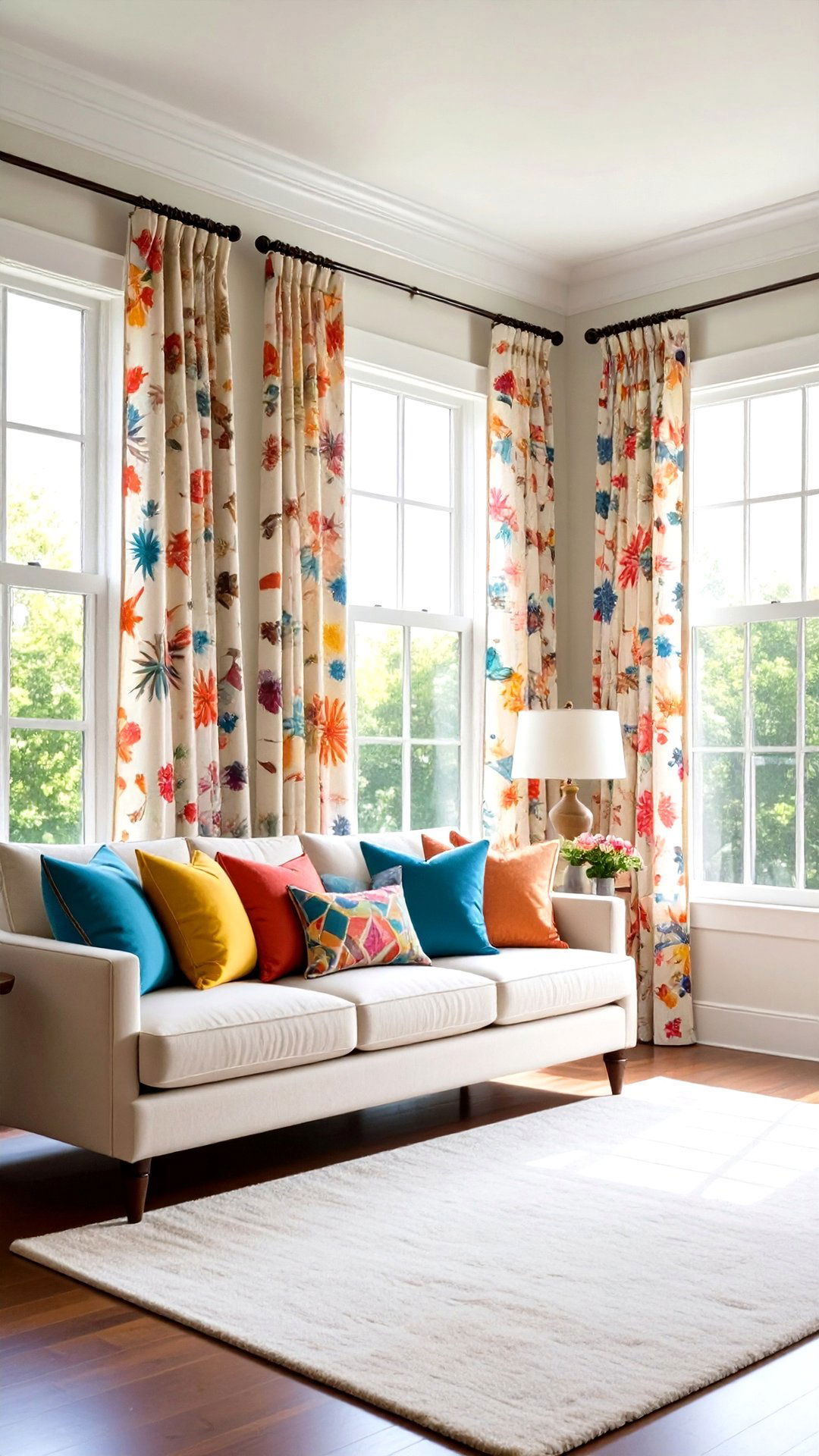
Hefty barkcloth fabric, loved for its nubby texture, often carried bold boomerangs, star clusters, and abstract florals. Floor-to-ceiling drapes in a period print enliven a 1950s living room while insulating against drafts. If full curtains feel too heavy, sew the fabric into tailored Roman shades or throw pillows so the pattern still sparks conversation.
7. Warm Things Up with a Wood-Paneled Accent Wall
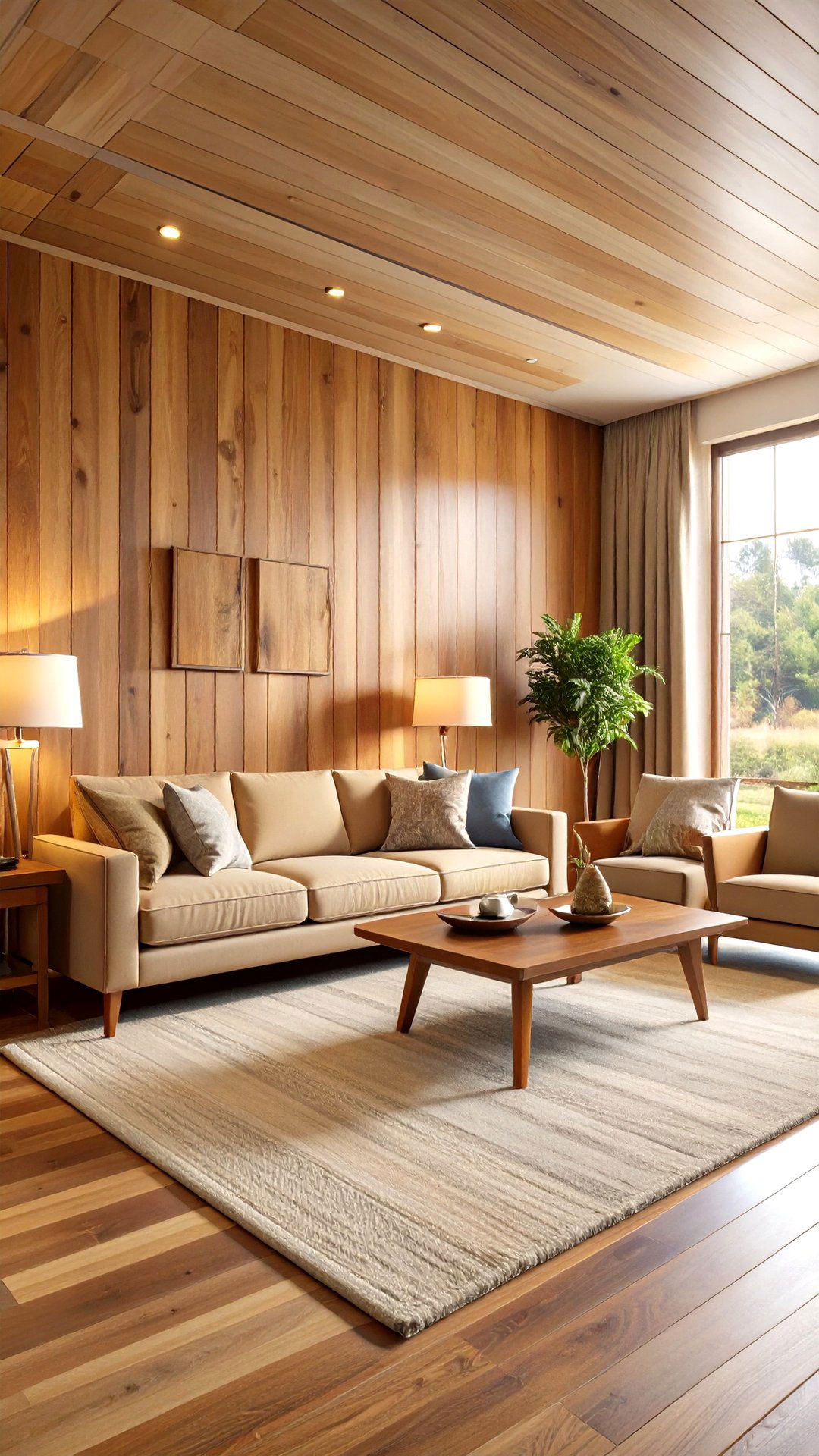
A single wall clad in honeyed cedar or darker walnut evokes the era’s ranch houses and conversation pits. Horizontal planks emphasize room width, while vertical tongue-and-groove draws the eye upward — helpful in low-ceilinged spaces. Balance the rich grain with lighter furniture fabrics and strategic uplighting for a cozy yet modern effect.
8. Showcase Vinyl on a Built-In Record Console
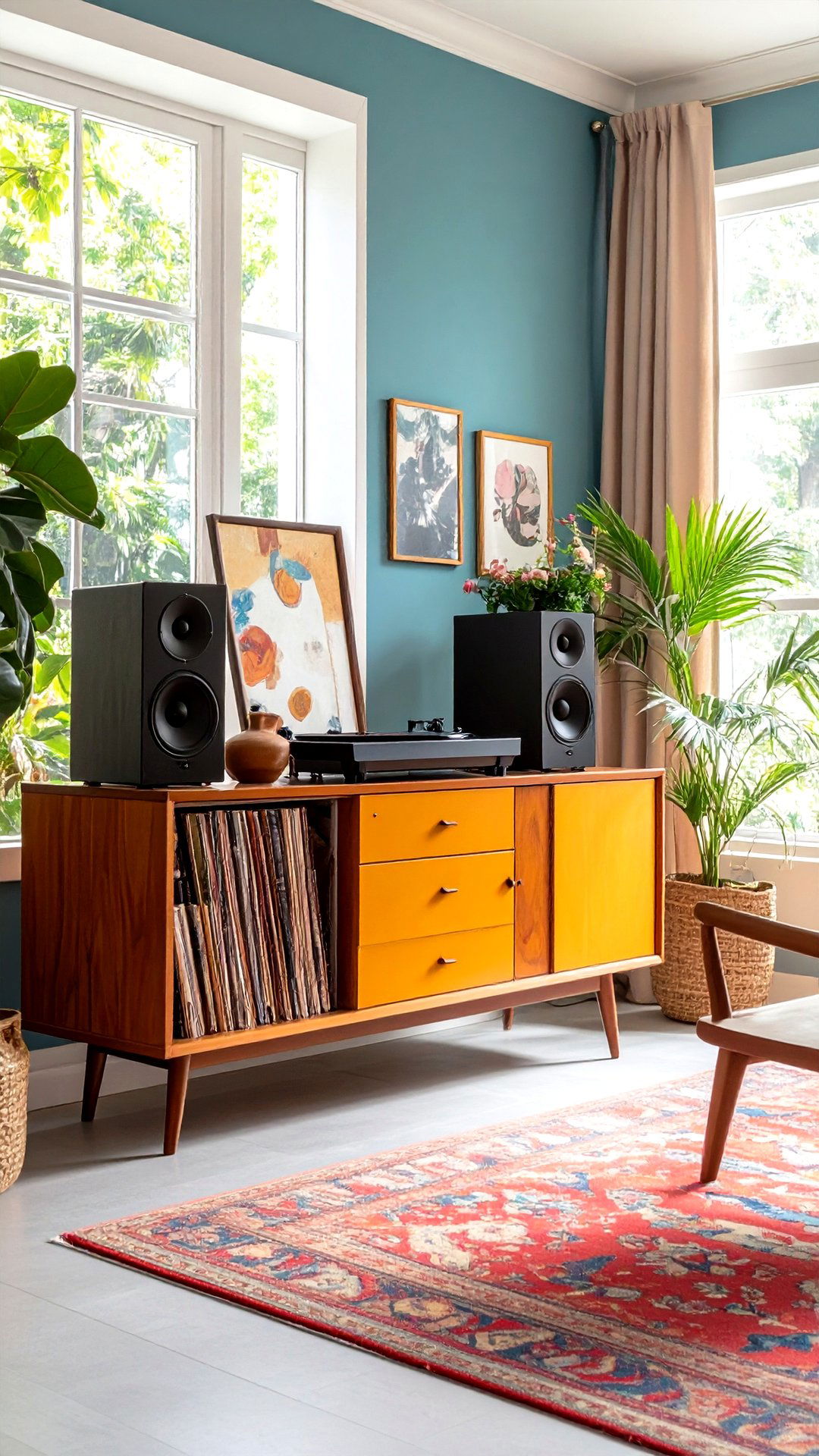
Nothing unites nostalgia and function like a built-in unit that hides speakers and shelves LPs behind sliding doors. Position the console beneath a window or against a long wall to double as a display surface for pottery and framed album art. Modern Bluetooth turntables tuck neatly inside, merging vintage looks with 21st-century tech.
9. Roll Out a Bold Geometric Area Rug
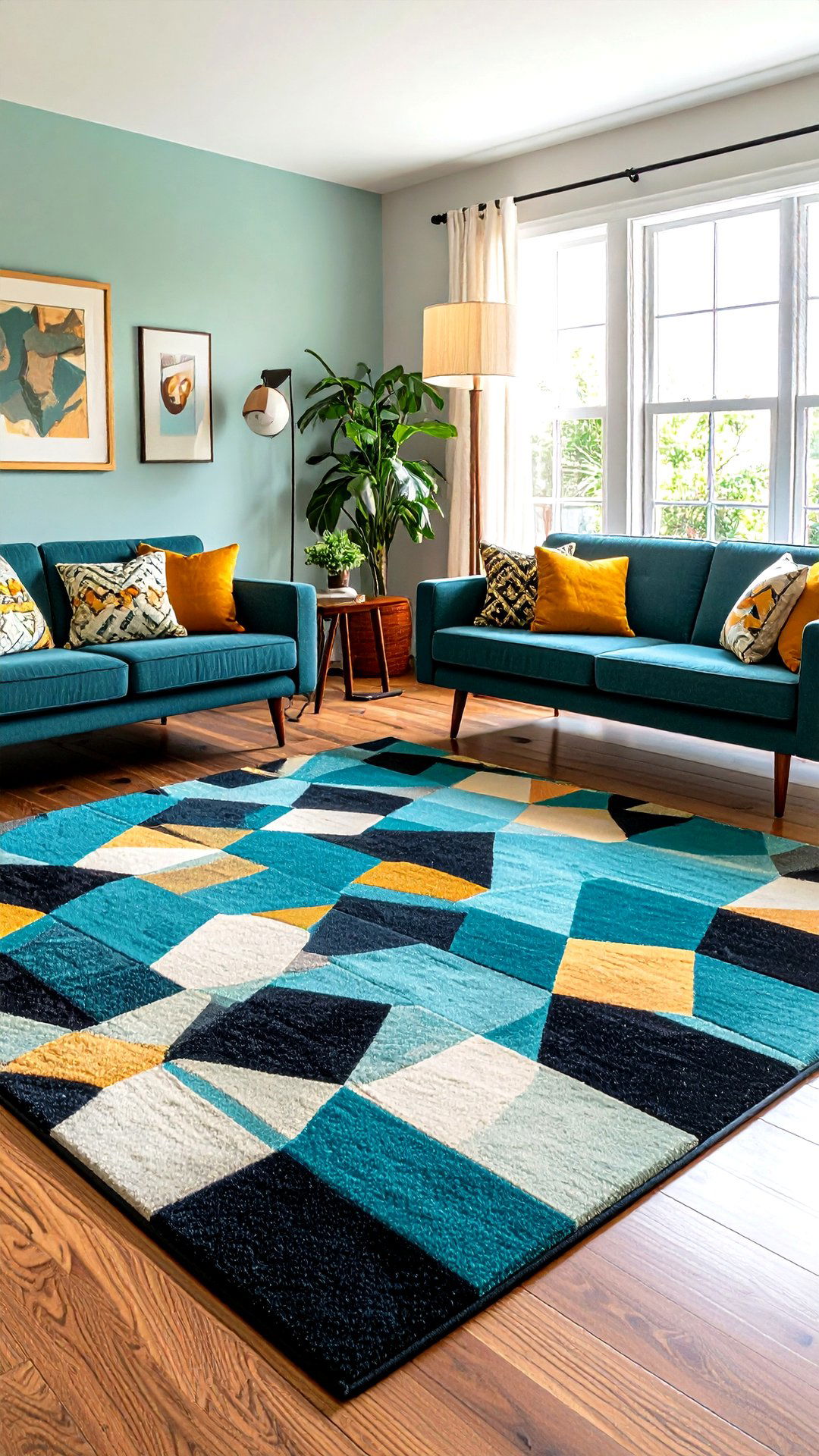
Checkerboards, ellipses, and interlocking rectangles introduced dynamic movement underfoot in many 1950s living rooms. Choose a wool or nylon rug in contrasting yet complementary colors — turquoise and charcoal, mustard and cream — to ground neutral seating. Keep surrounding furniture legs visible to show off the rug’s pattern rather than hiding it beneath skirts.
10. Flank Seating with a Sculptural Teak Sideboard
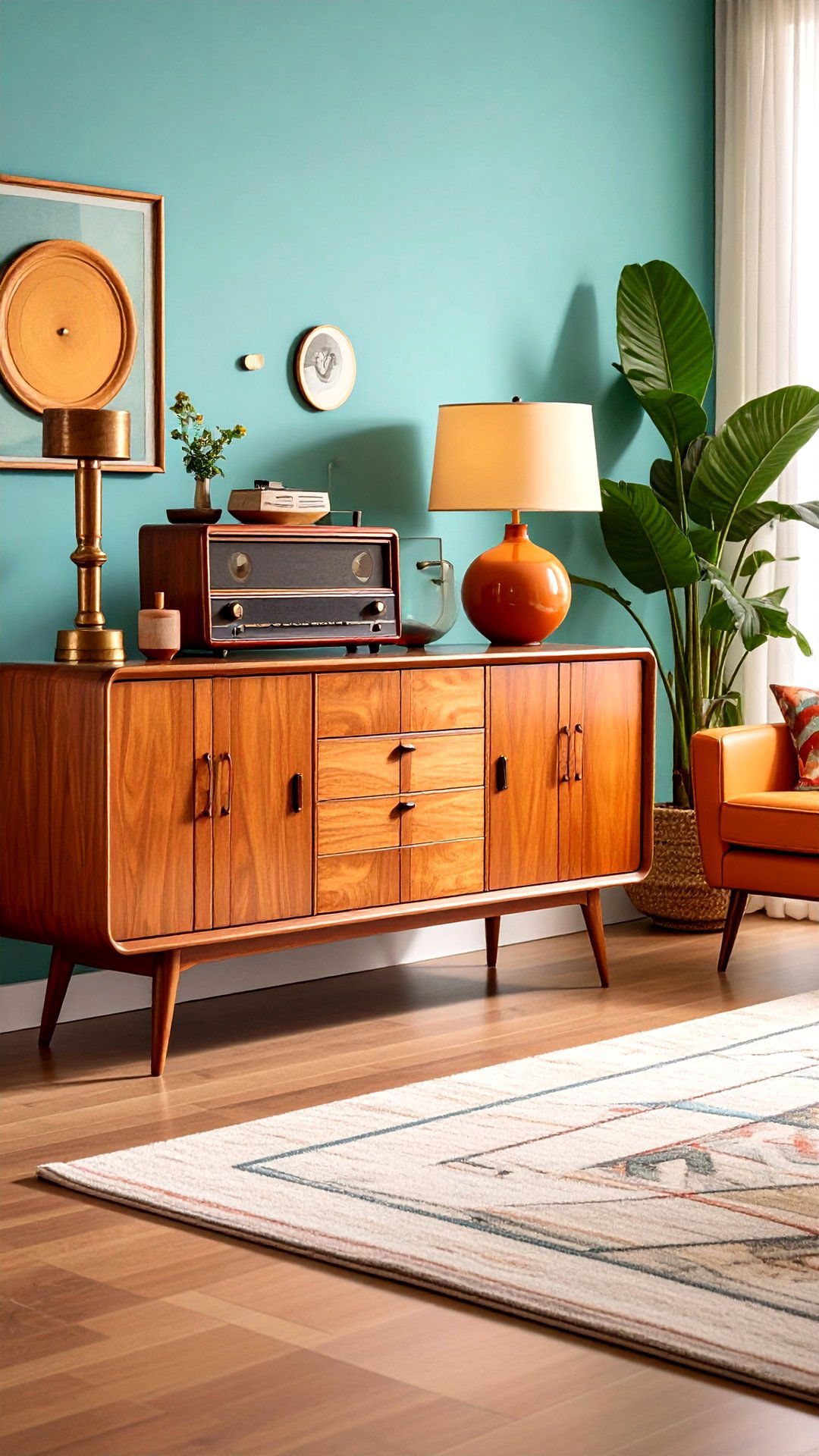
Mid-century sideboards weren’t just for dining rooms. In a 1950s living room they doubled as media cabinets, liquor storage, or art display stands. Opt for one with sliding doors and recessed pulls, then top it with a pair of ceramic lamps or a vintage radio to underline its period pedigree.
11. Pop a Turquoise Accent Chair into the Corner

Turquoise ranked among the era’s happiest hues, and a single armchair upholstered in this bright blue-green instantly revives a subdued scheme. The cool tone harmonizes with both warm wood and pastel walls, offering a visual bridge across the room. Keep the chair’s frame angular and its legs exposed for unmistakable mid-century character.
12. Go Wall-to-Wall with Plush Carpet Underfoot

Although hardwood reigned earlier, the 1950s saw wall-to-wall carpeting become an attainable luxury. A low-pile cut loop in oatmeal, soft gray, or rose blush feels era-correct and cozy. Add a small patterned accent rug on top for color without overwhelming the base layer and enjoy the acoustic softness carpeting brings.
13. Pair Pink and Gray for a Classic Two-Tone Palette

Looking for an easy color recipe? Dusty rose and dove gray formed one of the decade’s signature duos, balancing warmth with sophistication. Use gray on the largest surfaces — sofa, rug, large-scale art — then let pink shine in throws, lampshades, or ceramics. Metallic brass or chrome accents keep the scheme from feeling too sweet.
14. Sprinkle in Tiki-Inspired Planters for Exotic Flair
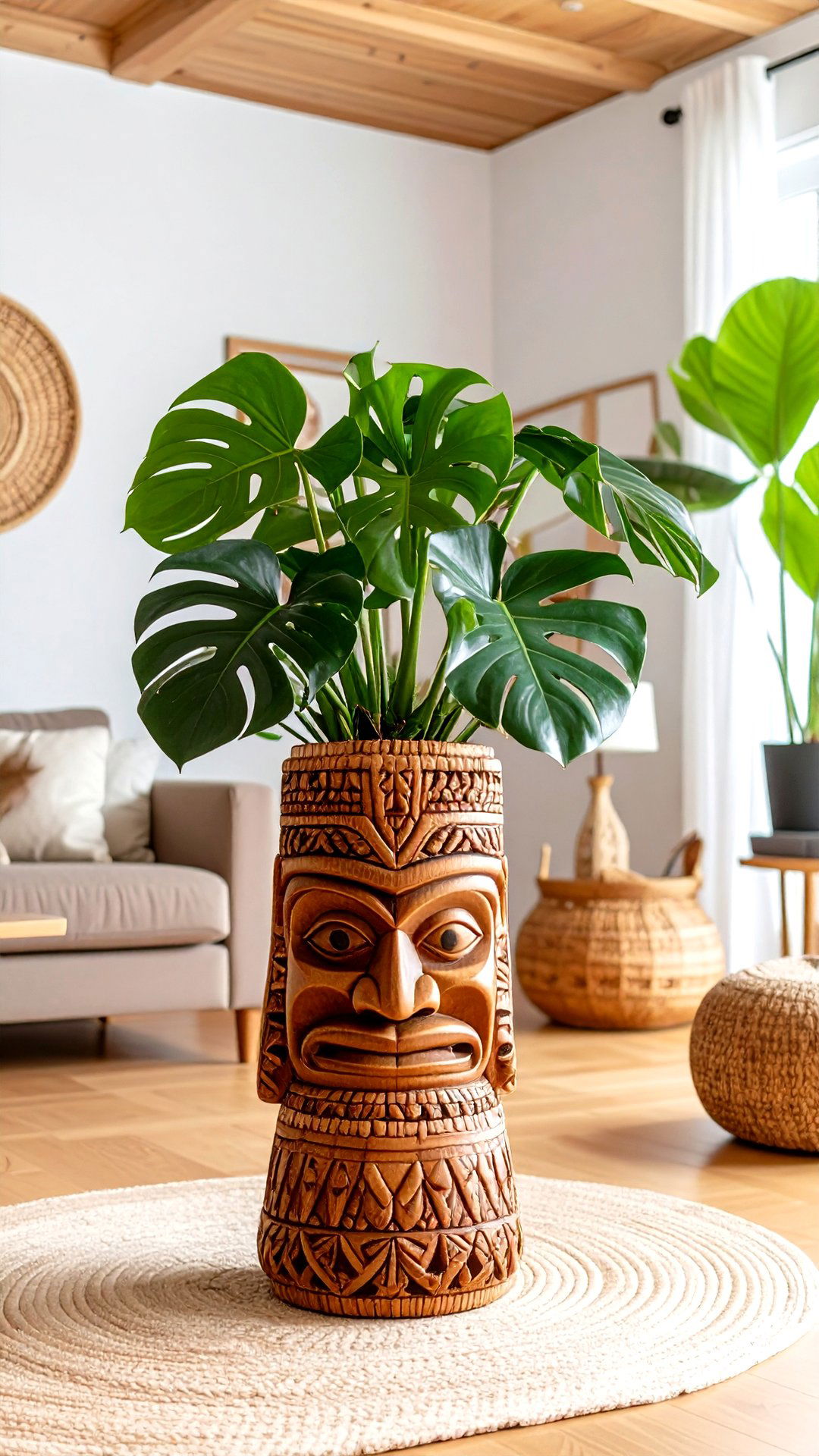
Post-war fascination with Hawaii filtered into mainland décor by way of bamboo details and carved planters. A pair of ceramic Tiki heads or rattan cachepots filled with leafy philodendrons introduces playful texture without relying on kitschy barware. Cluster them on a credenza to build an instant mini jungle.
15. Float Collections on Slim Shelves
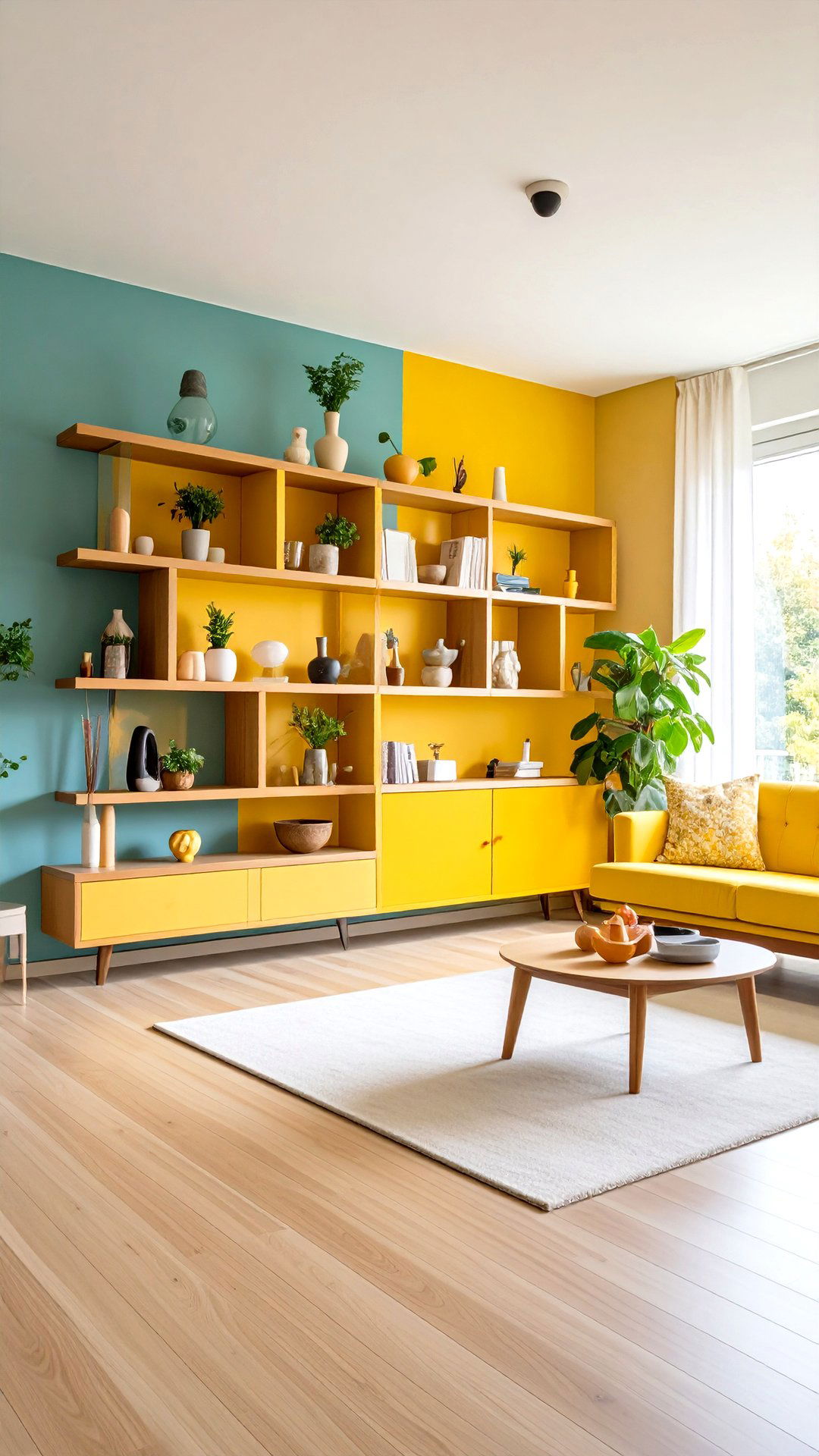
Instead of bulky bookcases, mid-century homeowners often used slim, wall-mounted boards to show off glassware and tiny sculptures. Install staggered pine or walnut shelves, then arrange treasures in odd-numbered groupings so each vignette breathes. Floating shelves also free precious floor space for traffic flow in a modest 1950s living room.
16. Elevate Plants on Hairpin-Leg Stands
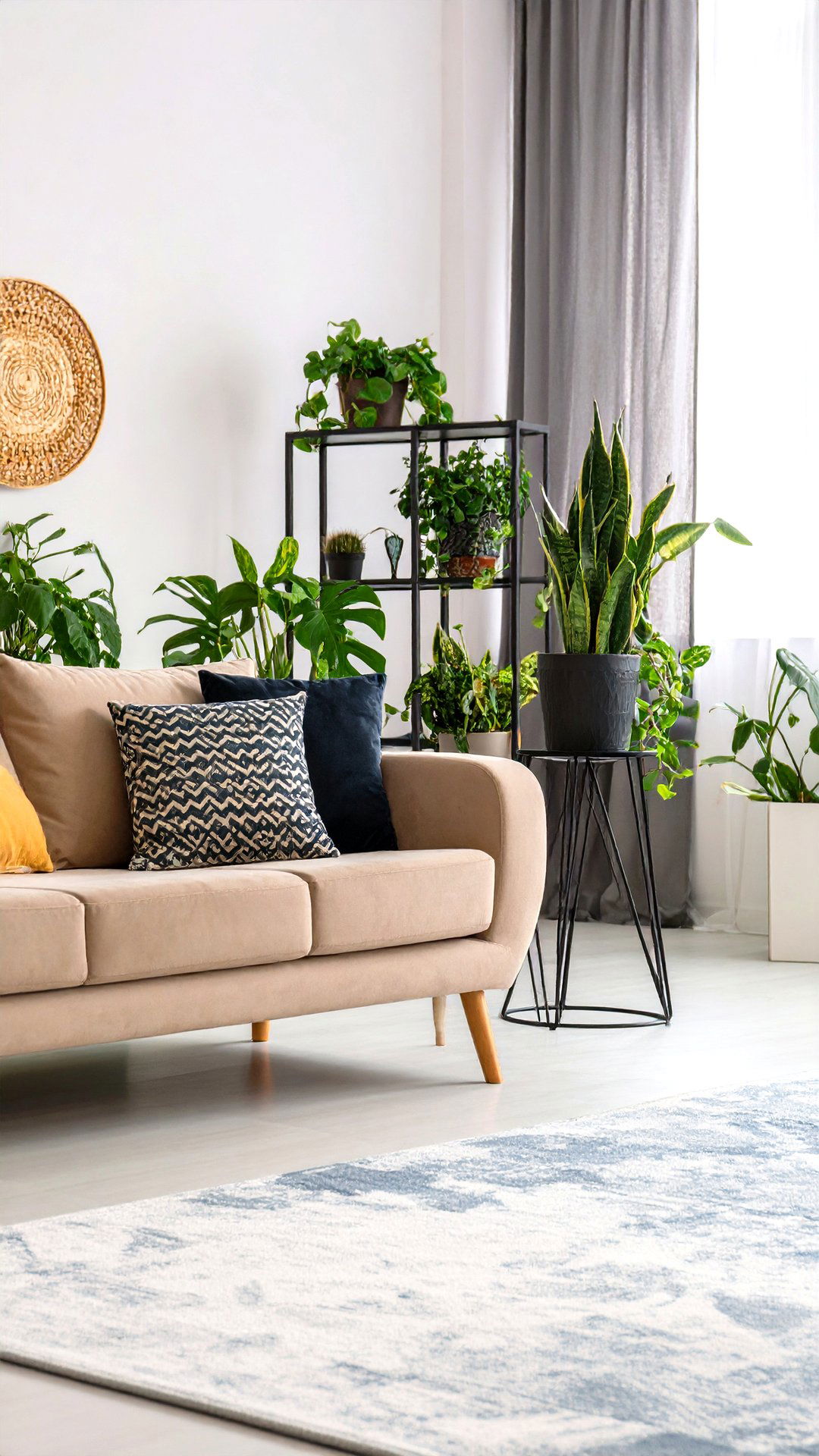
Hairpin legs epitomize mid-century ingenuity: strong, minimal wires that lift objects gracefully. Pop a snake plant or trailing pothos onto a steel-leg stand beside the sofa to add vertical interest and a touch of greenery. Spray-paint thrifted bases in mustard or black to harmonize with other metal accents.
17. Define Zones with a Folding Room-Divider Screen

Open-plan ranch houses sometimes needed flexible boundaries, and folding plywood or rattan screens provided privacy while adding sculptural presence. Use a perforated wood panel to create a reading nook behind the sofa or hide a small desk. When entertaining, fold the screen flat for maximum mingling space.
18. Introduce Patterned Linoleum as a Statement Mat
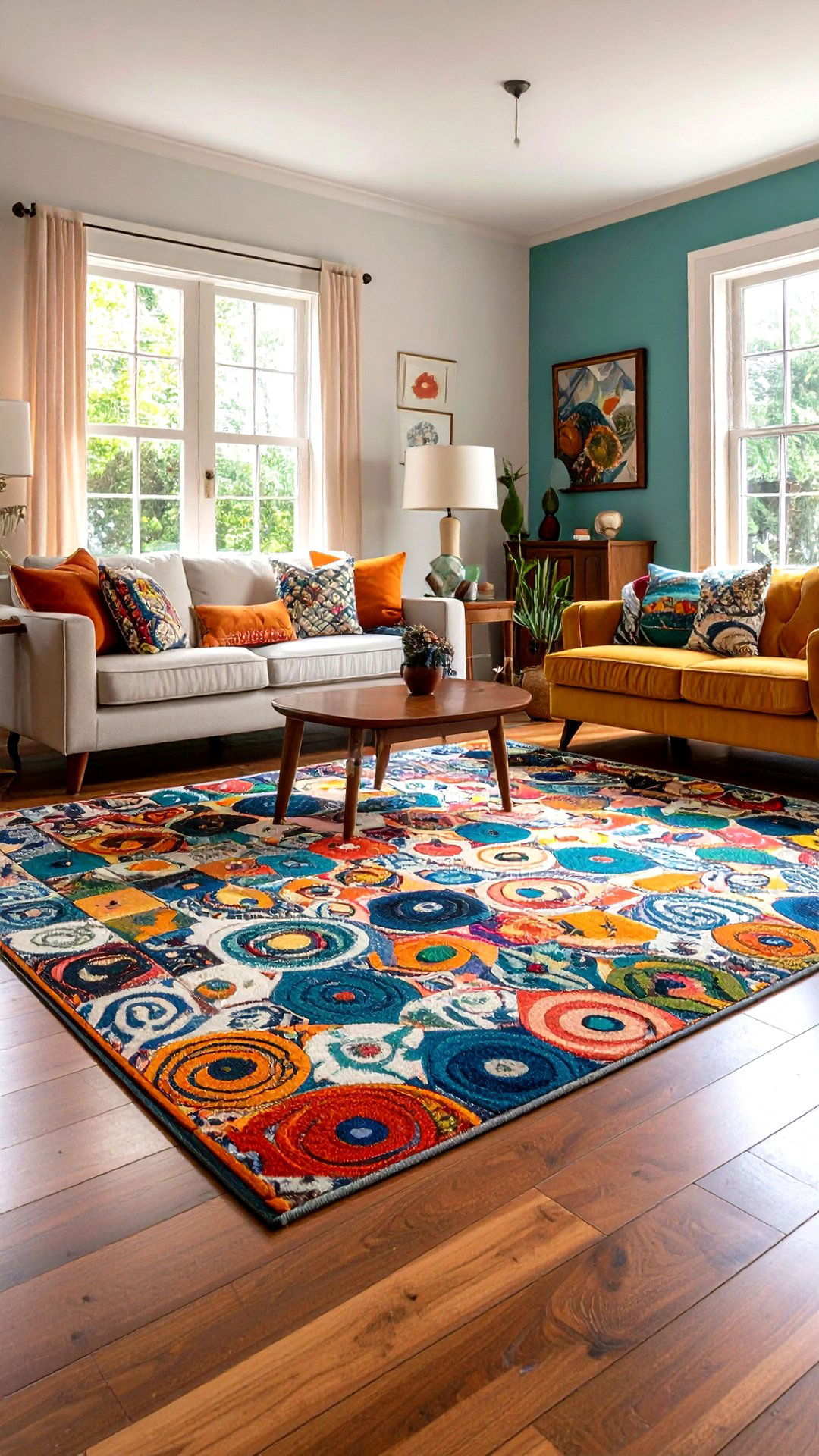
Colorful linoleum wasn’t restricted to kitchens; homeowners occasionally dropped a cut-edge piece in the living room for easy cleaning. Choose a checkerboard or abstract swirl, then frame it with hardwood or carpet to create a playful “rug” that stands up to heavy traffic.
19. Arc a Multi-Arm Floor Lamp over Conversation Seating

Arc lamps emerged at the end of the 1950s and solved the perpetual problem of overhead wiring in rental ceilings. A chrome or brass arm swings across the coffee table, showering light exactly where you need it for board games or late-night reading, while its sculptural form echoes the curves of your boomerang table.
20. Layer Atomic-Patterned Cushions for Instant Energy
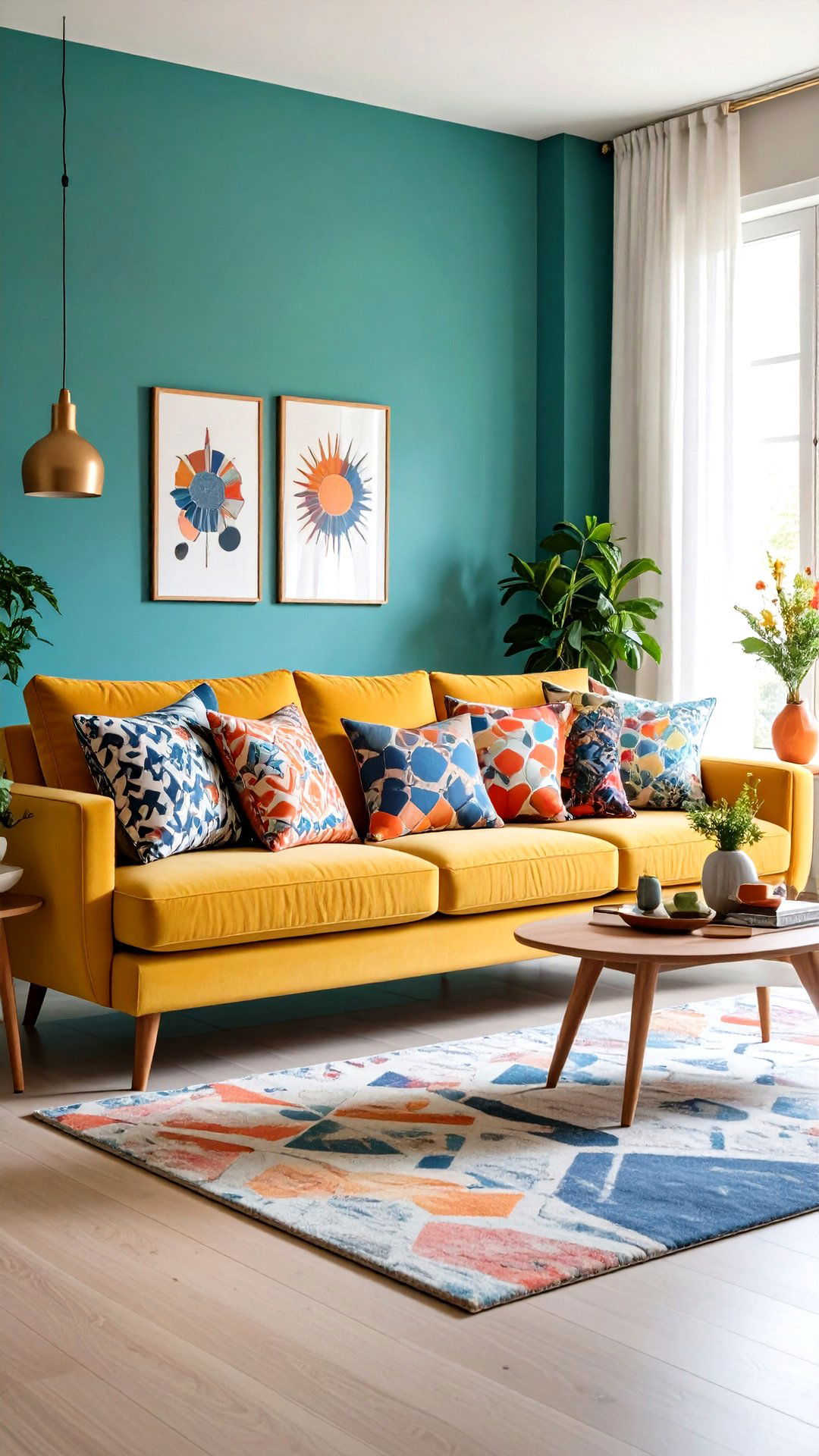
If you’re wary of committing to retro wallpaper, pillows are a painless test bed. Pick barkcloth or cotton covers printed with boomerangs, starbursts, or stylized molecules, then toss them on solid sofas or chairs. The pattern infusion keeps the eye moving and ties disparate color accents together.
21. Hang Space-Age Art Prints in Googie Colors
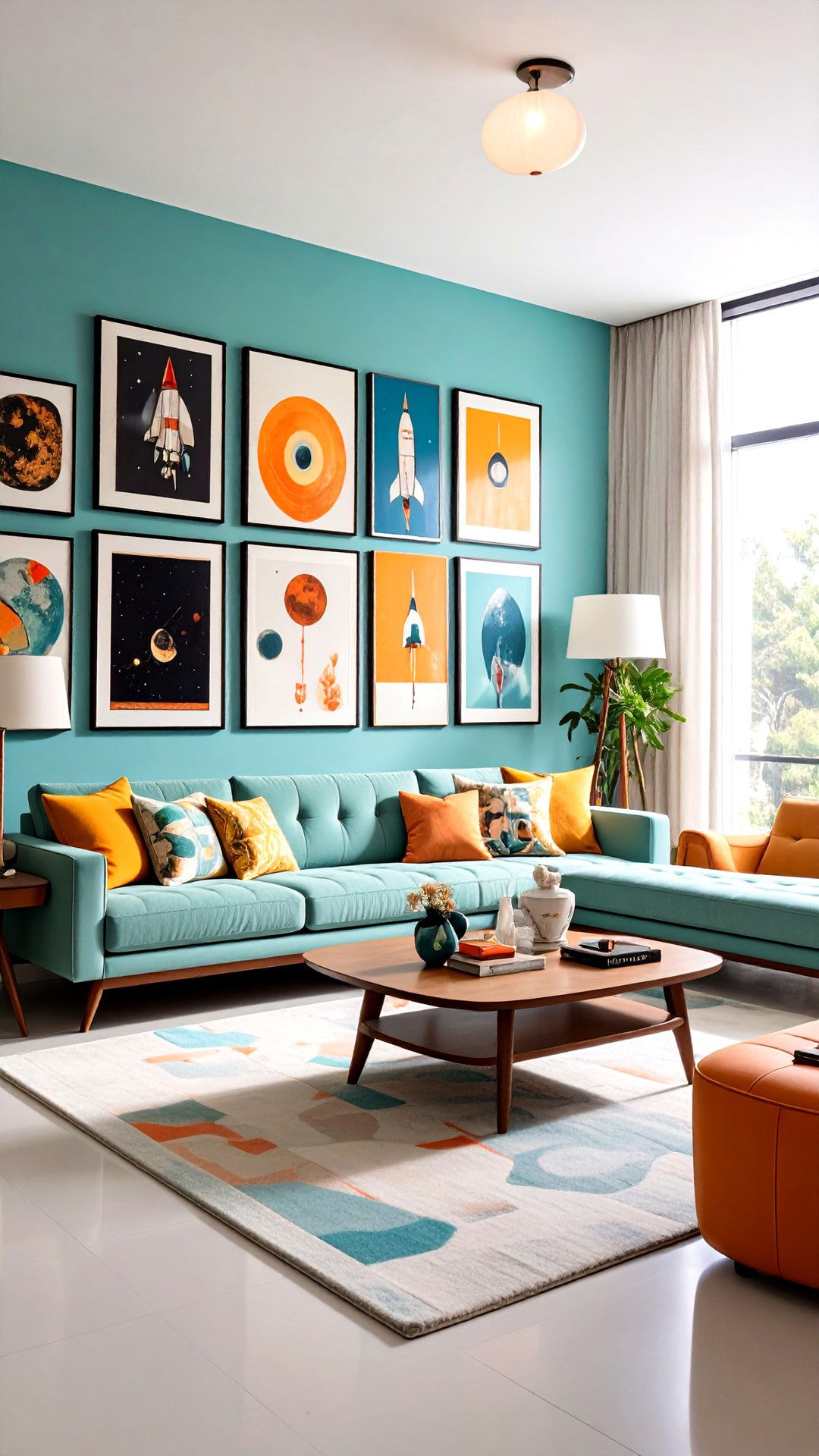
Graphic posters featuring satellites, rockets, or abstract star clusters capture the era’s skyward gaze. Group three prints in matching frames along one wall so their bold oranges, teals, and chartreuse tones repeat your fabric palette. The display doubles as a clever history lesson for guests.
22. Make the Fireplace a Stacked-Stone Showpiece
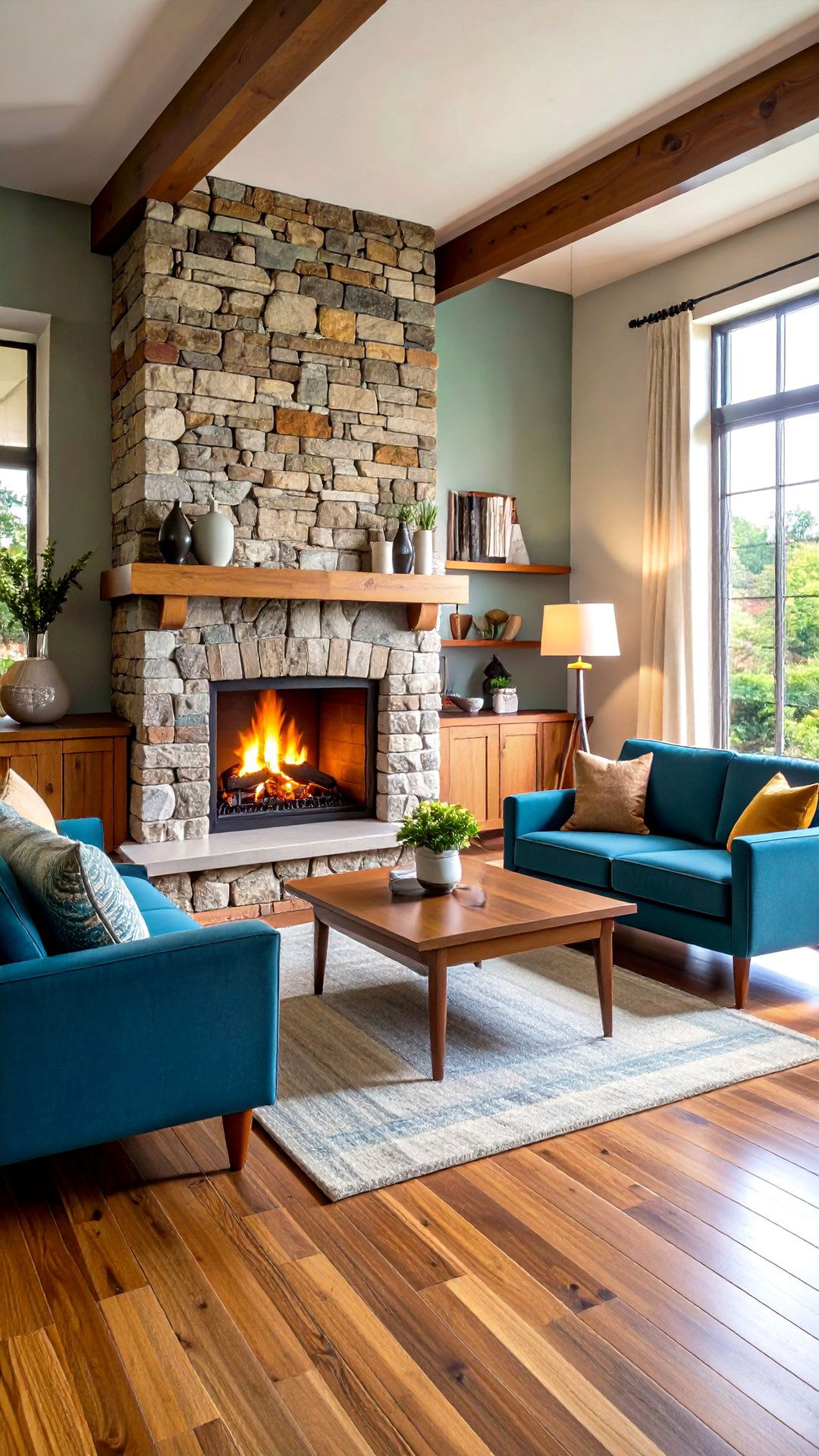
Many original 1950s living rooms boasted a rough-hewn stone or Roman brick hearth. Re-stone an existing surround or install a slim electric insert faced in ledgestone for drama without chimney work. Keep mantel décor minimal — a single Picasso-esque ceramic vase or brass candlesticks — so the texture remains the star.
23. Plant a Globe-Shaped Bullet Planter by the Window
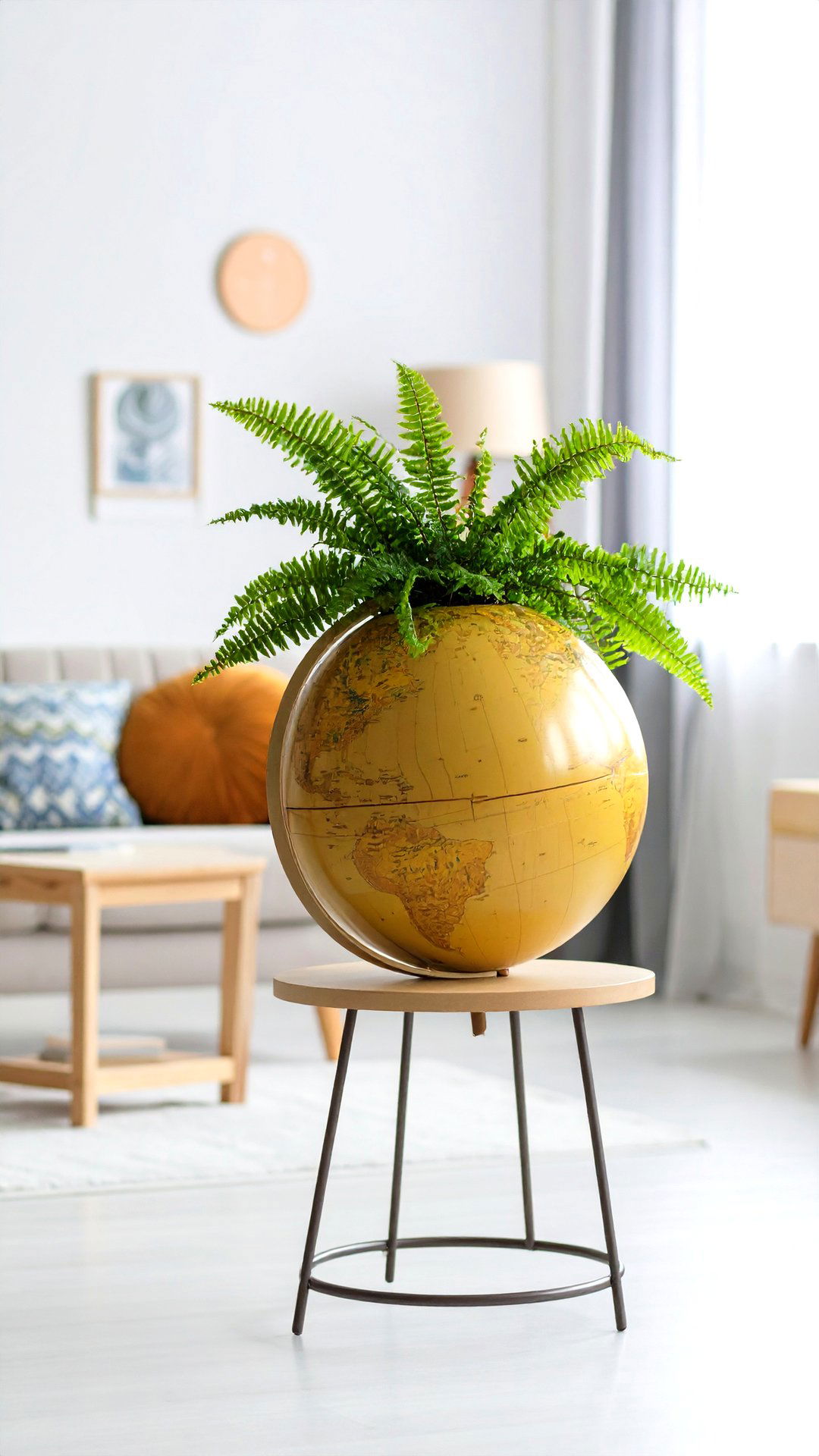
Designed by Arthur Umanoff and still reproduced today, fiberglass bullet planters cradle ferns in glossy, candy-colored shells atop wire stands. Position one by a sunny window so its curved silhouette echoes other round forms in the room, from clock face to sputnik bulbs, unifying the geometry.
24. Create a Gallery Wall of Vintage Travel Posters
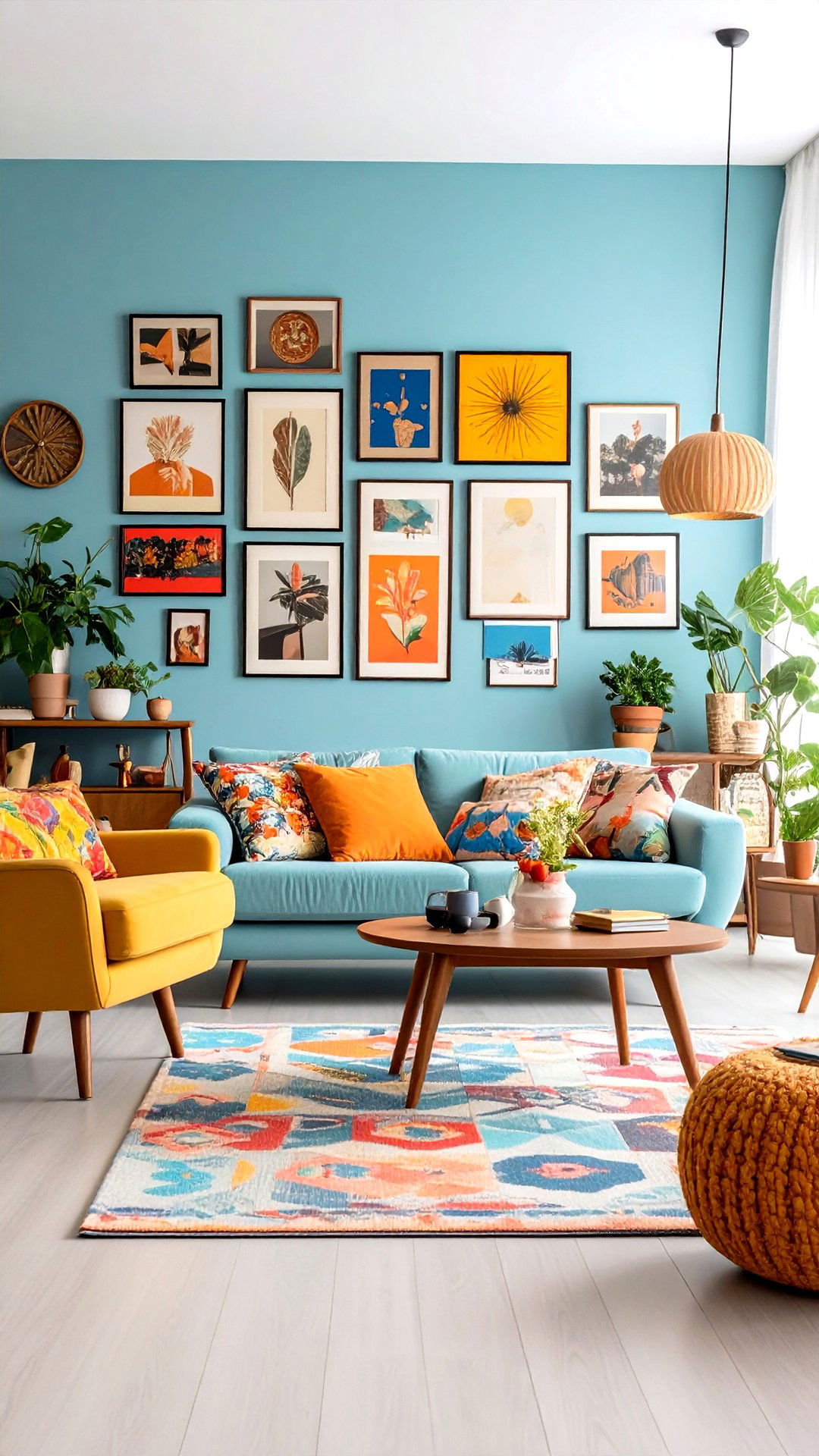
Rail and airline companies produced vibrant posters in the 1950s urging Americans to explore. Scour flea markets for originals or buy high-quality reprints, then frame them in slim black metal for continuity. A gallery wall adds height and story to blank areas while complementing pastel or neutral paint.
25. Finish with a Retro TV Console That Hides Modern Tech
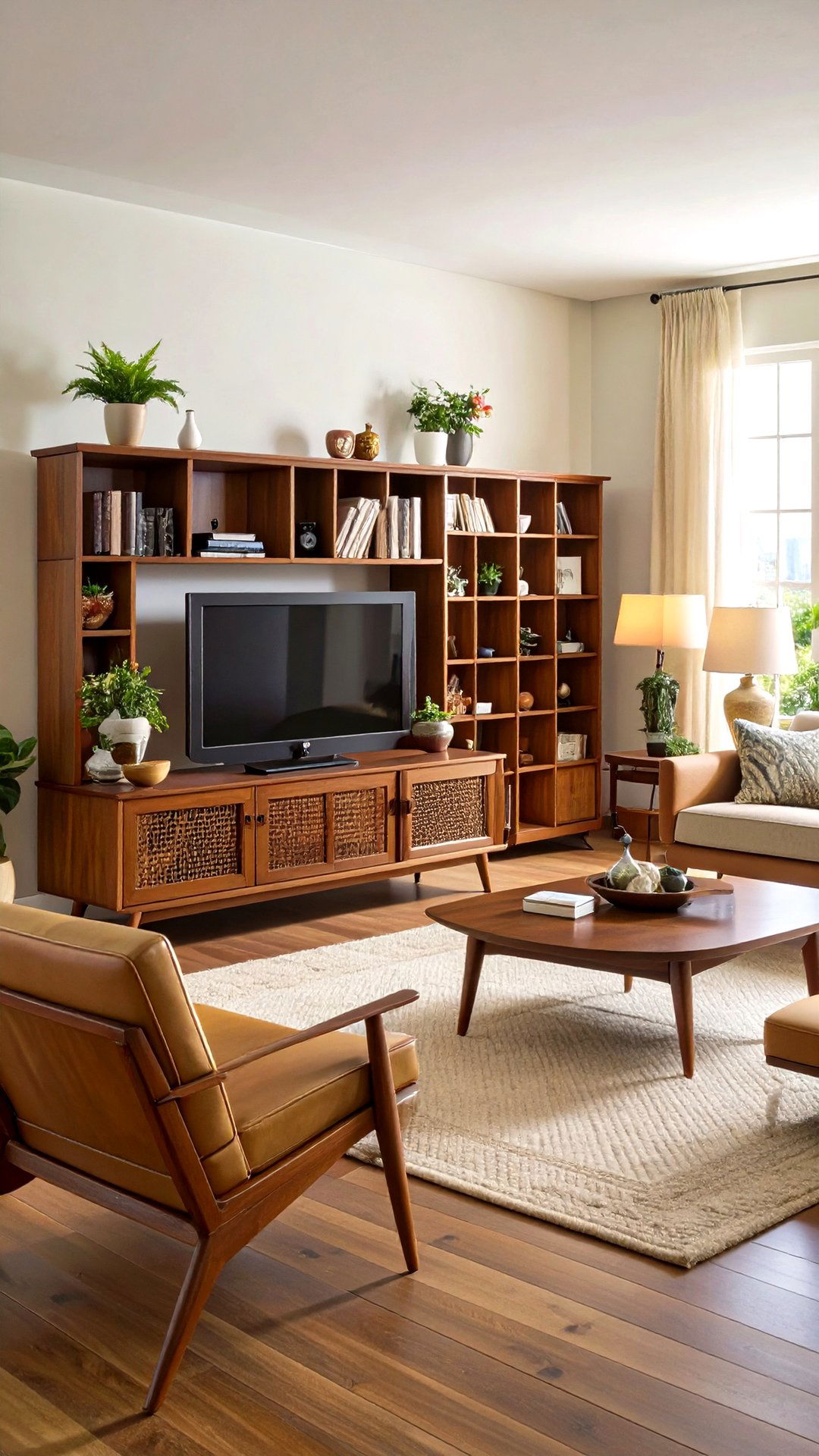
Round out the scene with a period-style television cabinet — bonus points if it features sliding tambour doors. A modern flat-screen fits inside or perches above, letting you binge-watch without sacrificing style. Use the console’s shelves for board games or streaming boxes, keeping cords tamed behind integrated panels.
Conclusion:
Blending past and present is less about strict rules than about distilling what made a 1950s living room feel hopeful: fluid lines, cheerful colors, and cleverly crafted furniture built for gathering. Choose the ideas that resonate — pastel walls, a starburst clock, maybe that swooping boomerang table — and layer them thoughtfully with modern comforts. The result is a room that celebrates mid-century ingenuity while meeting today’s needs, proving great design remains timeless when it’s rooted in warmth, practicality, and unabashed joy.


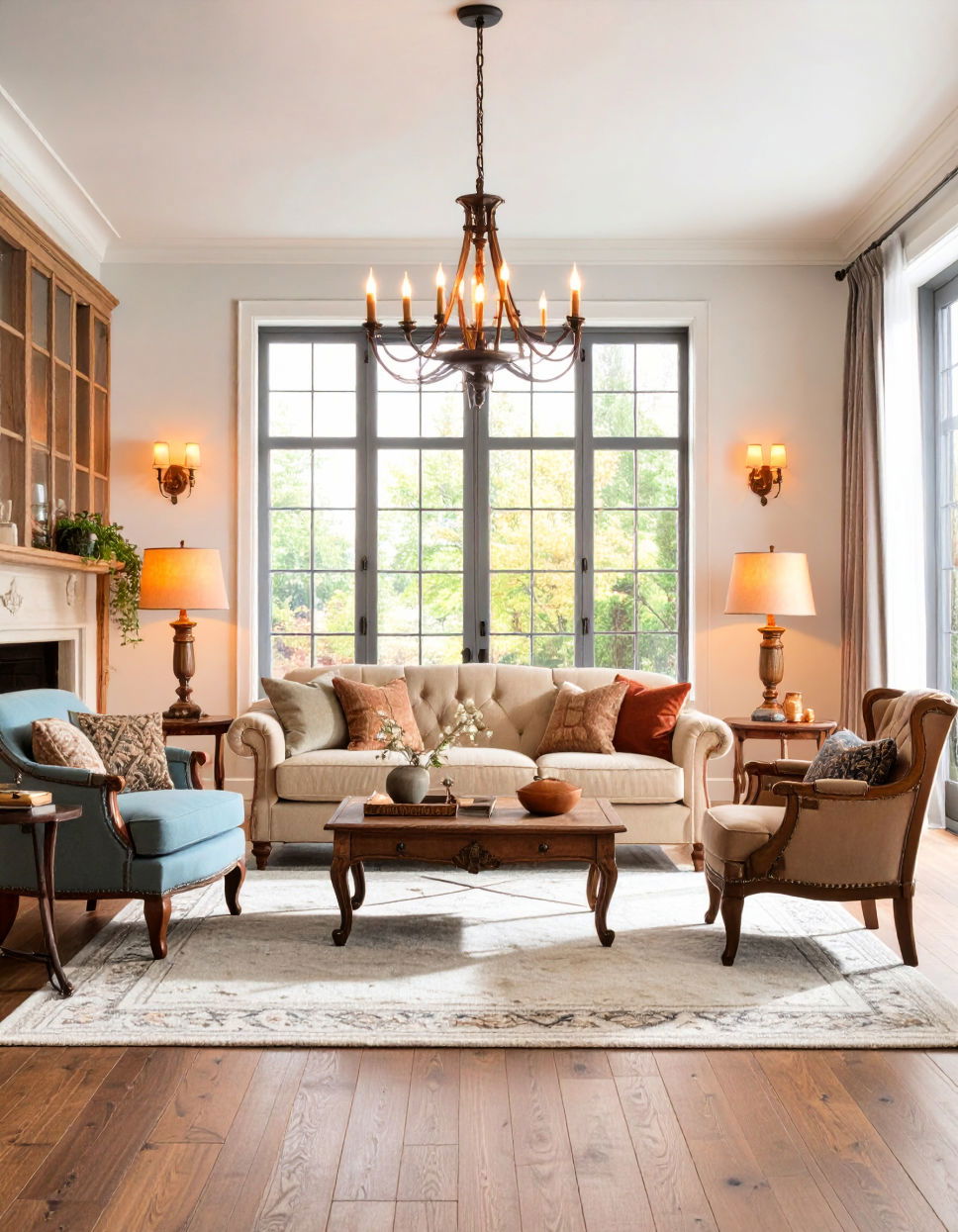
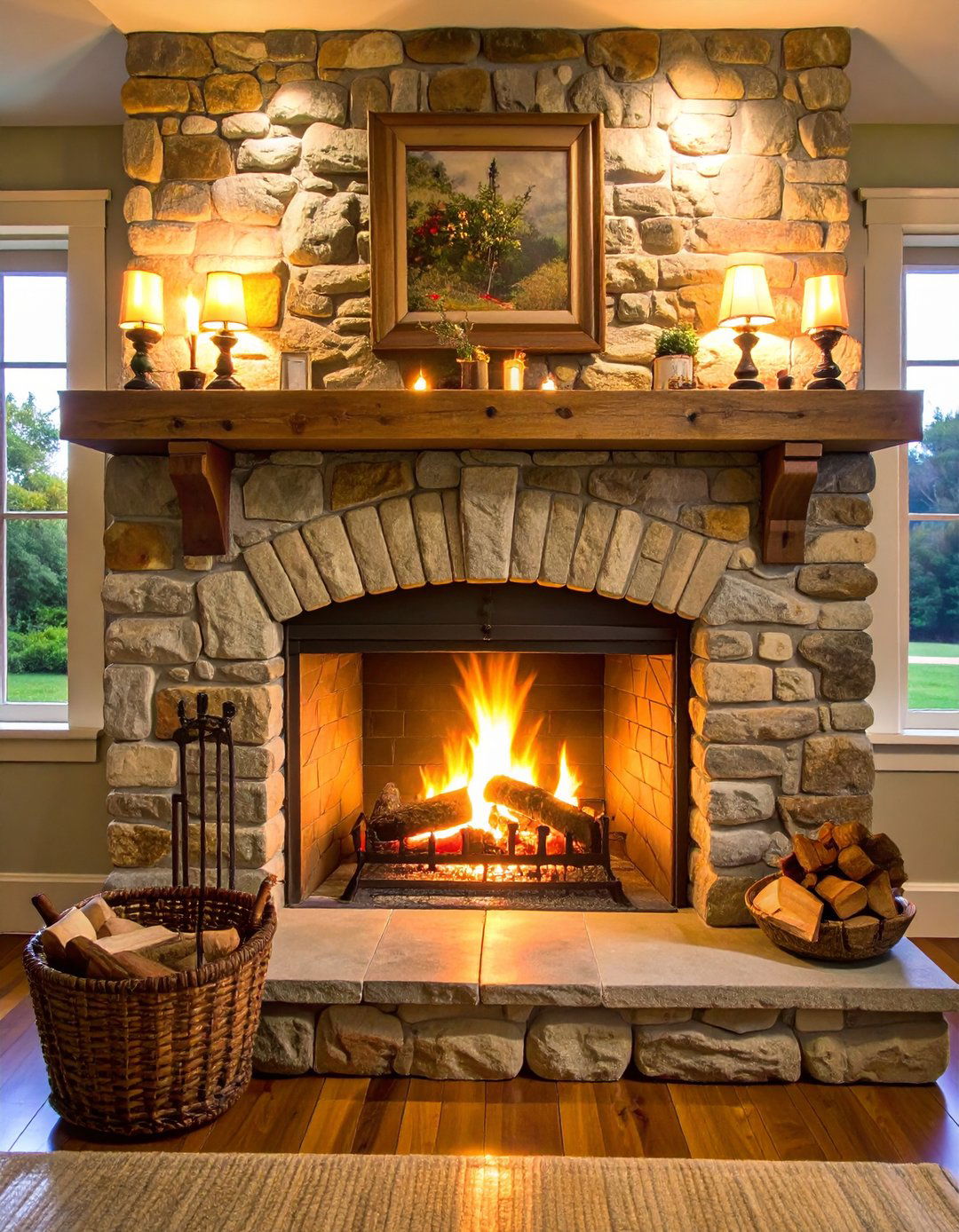

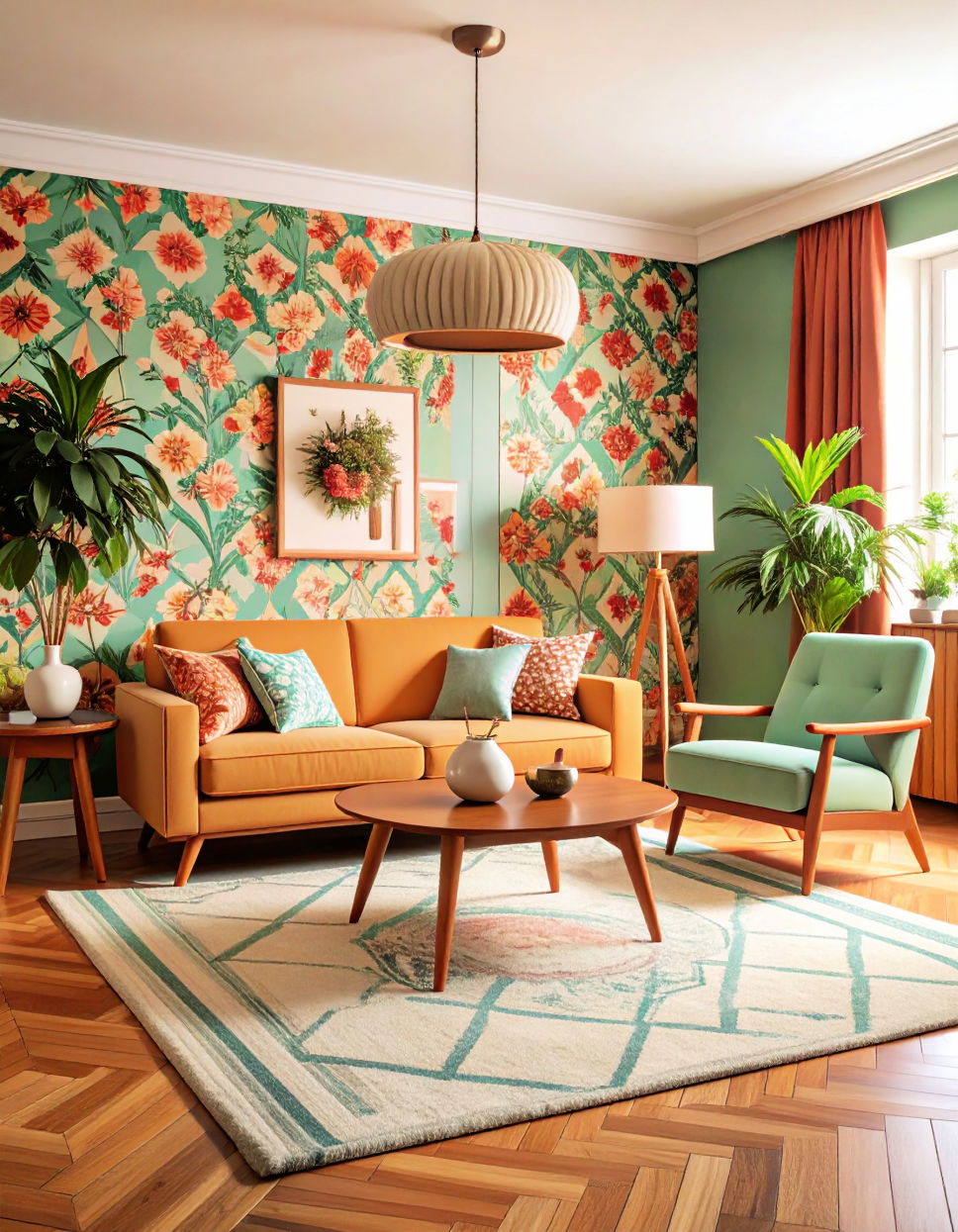
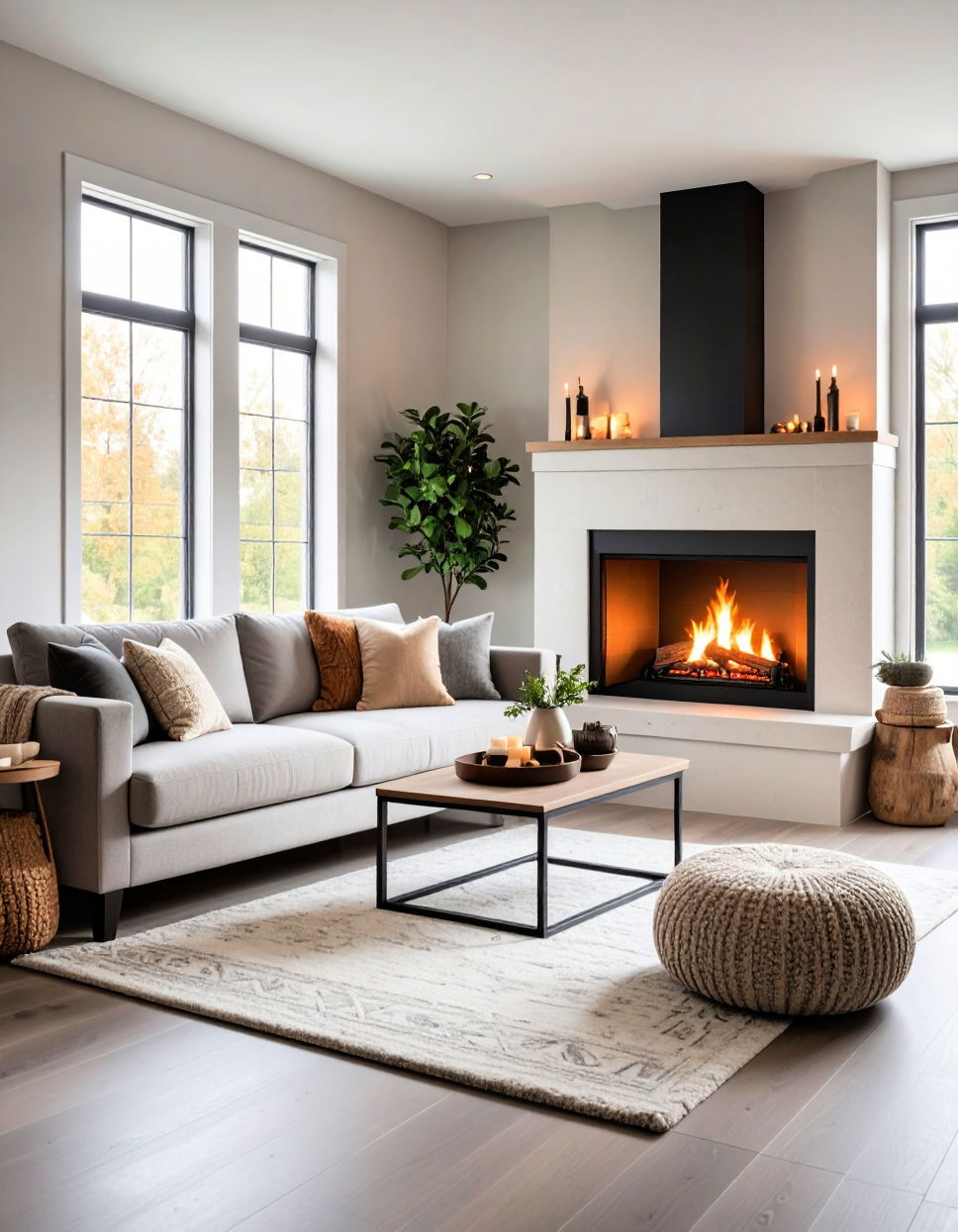

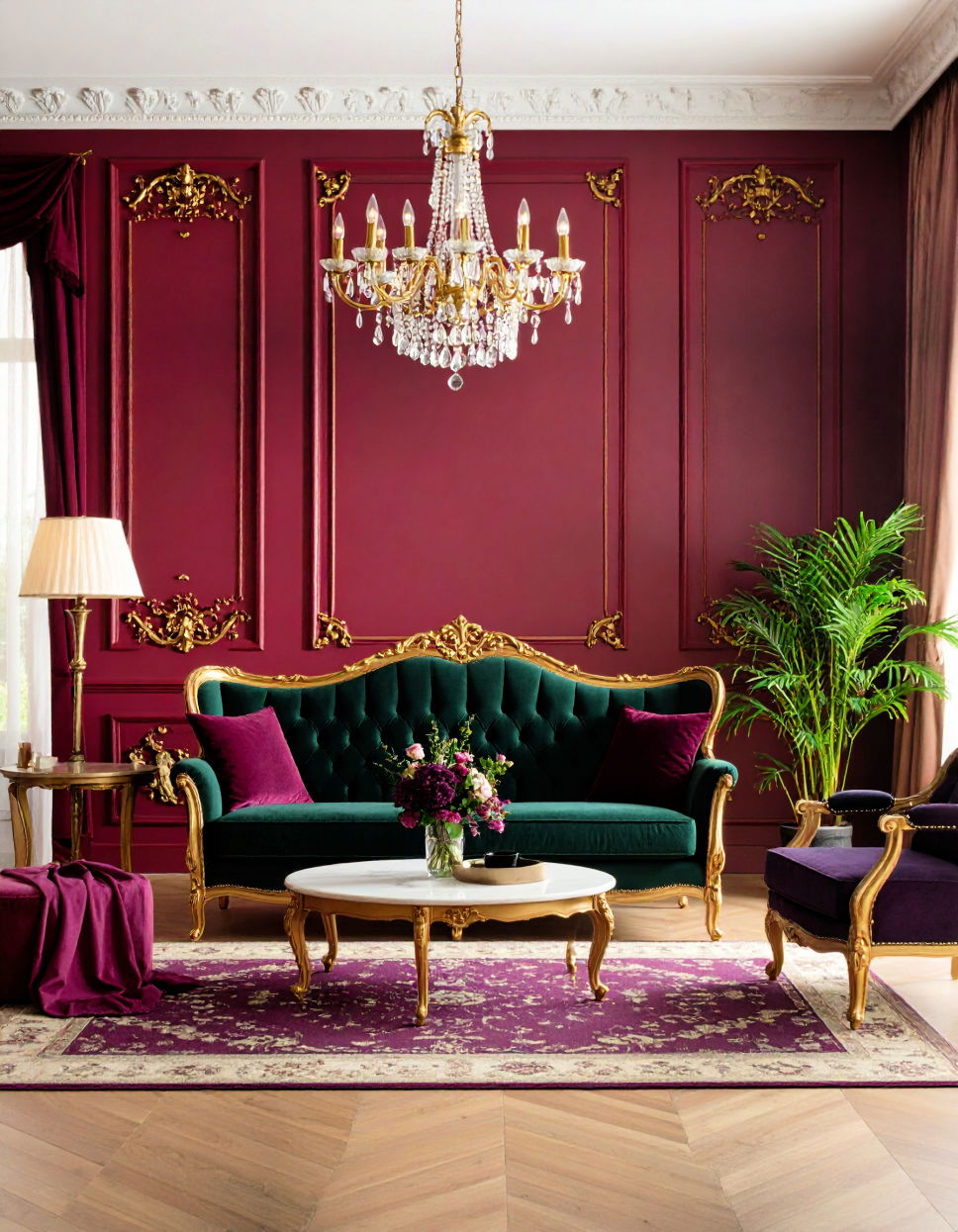
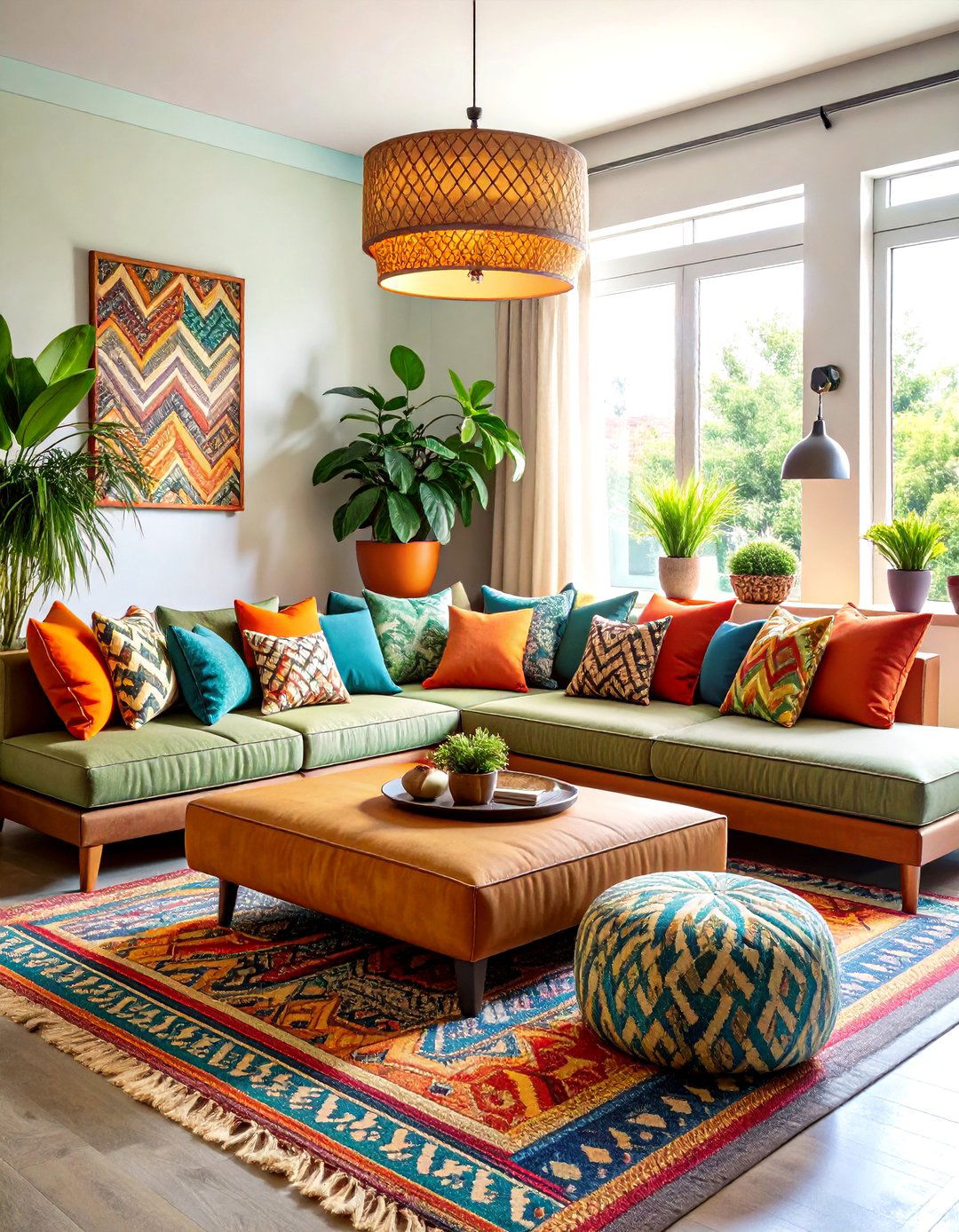
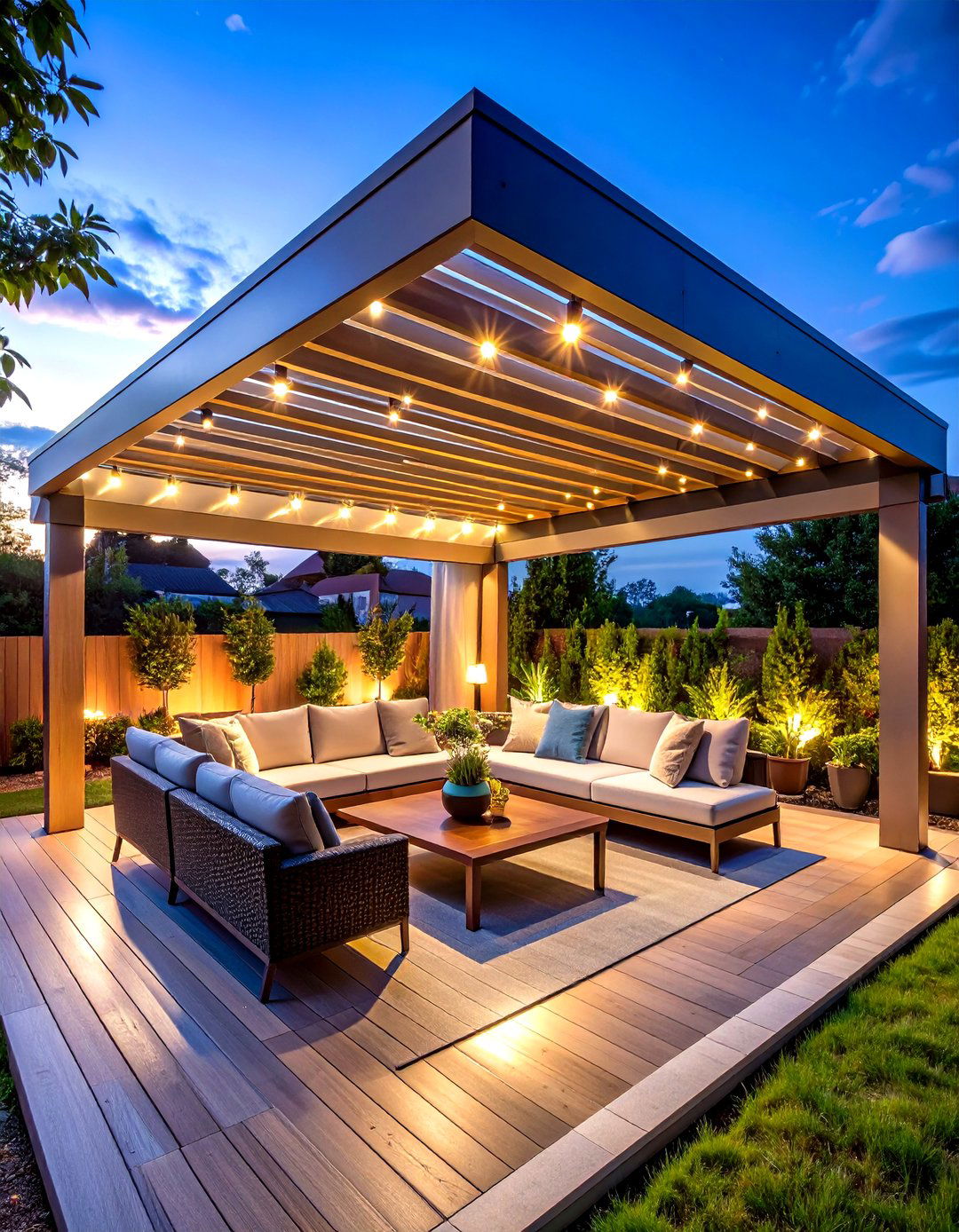
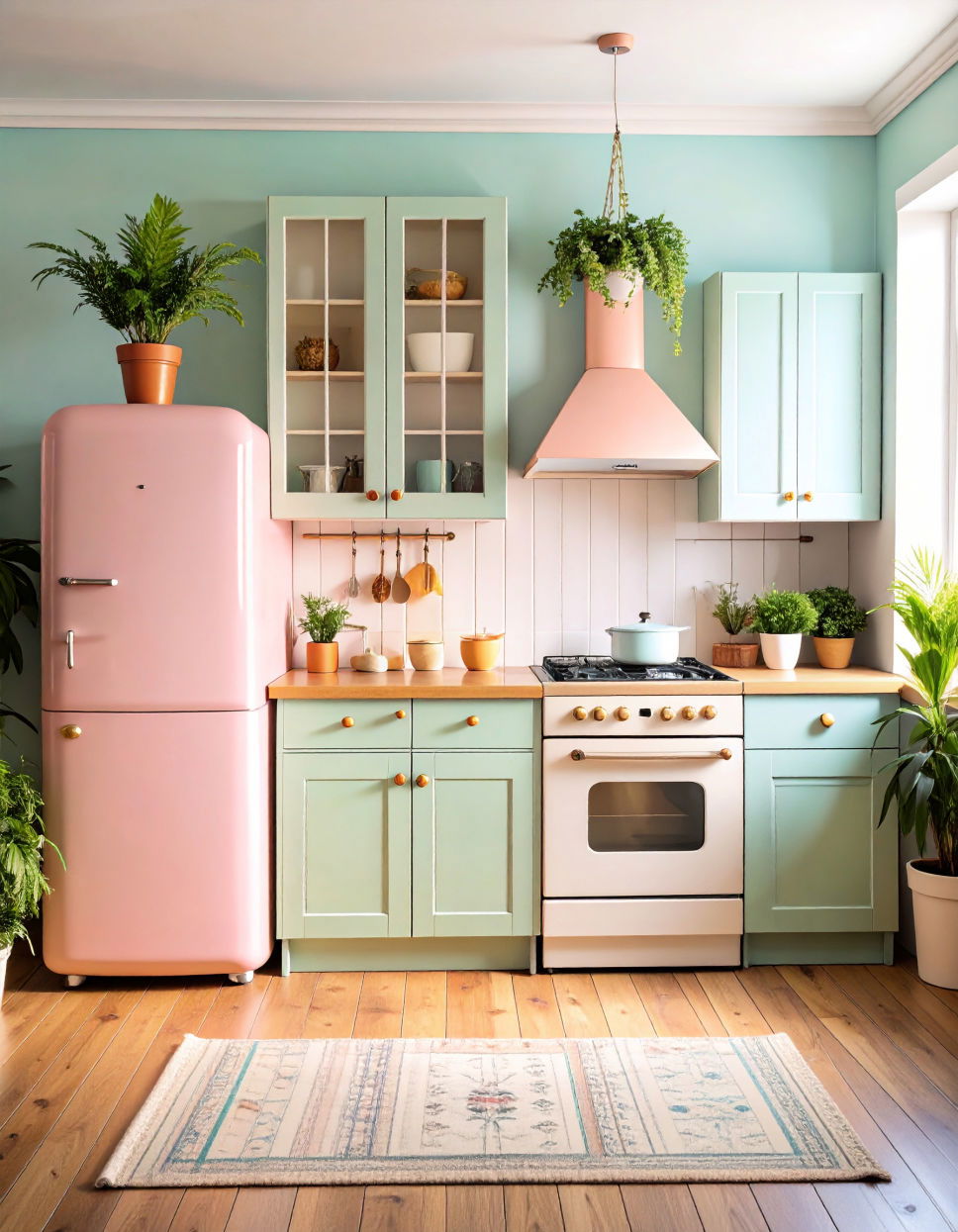
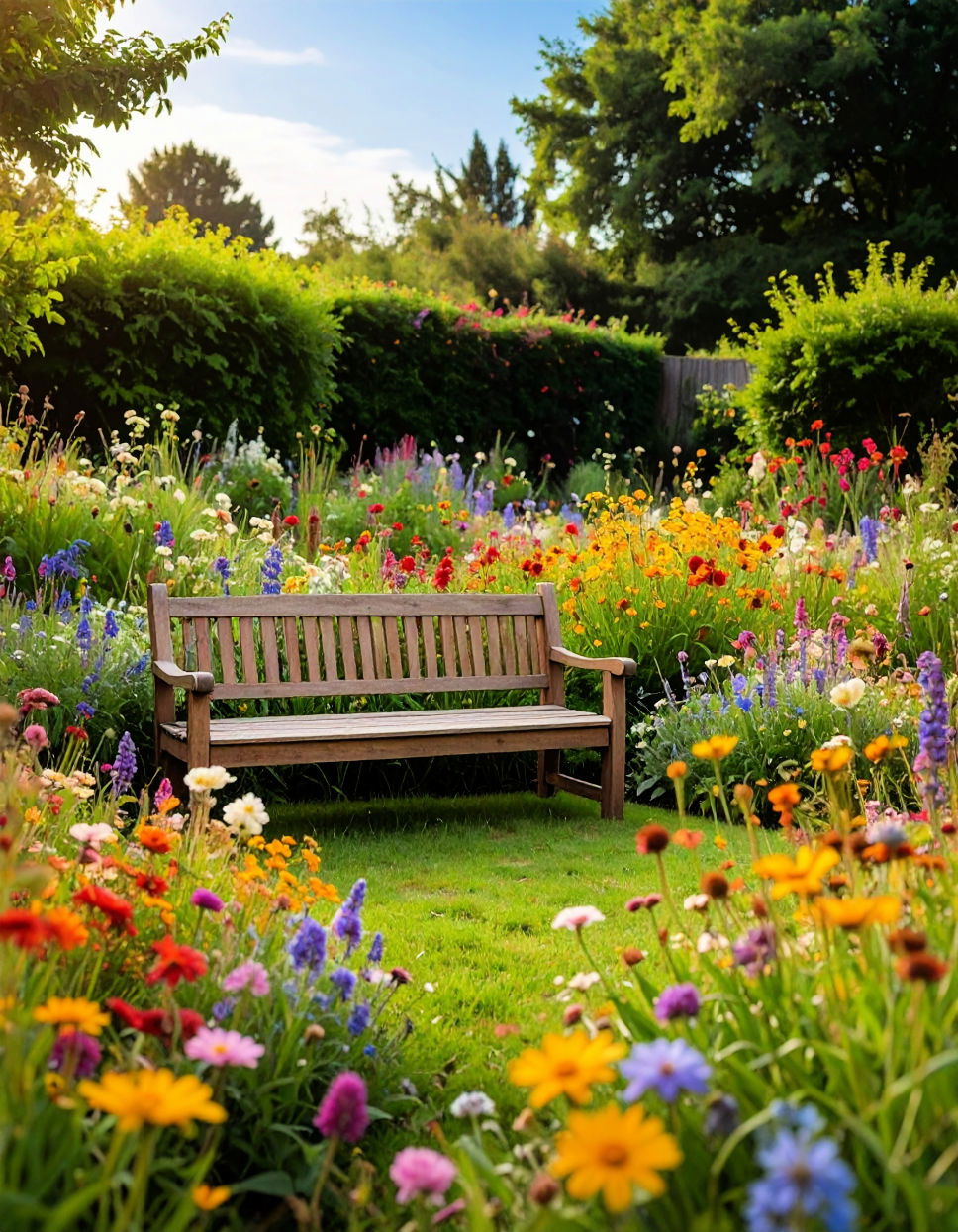
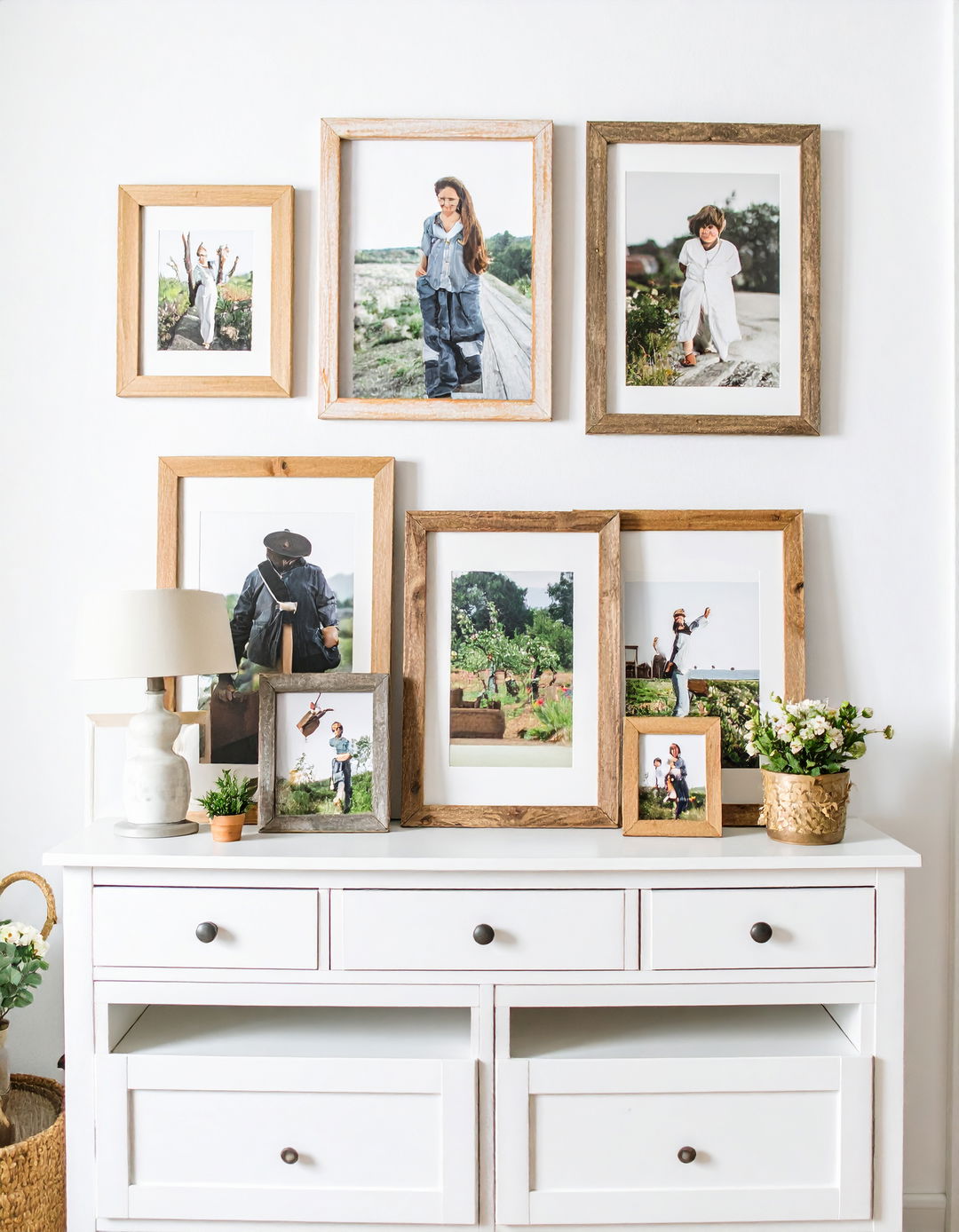



Leave a Reply